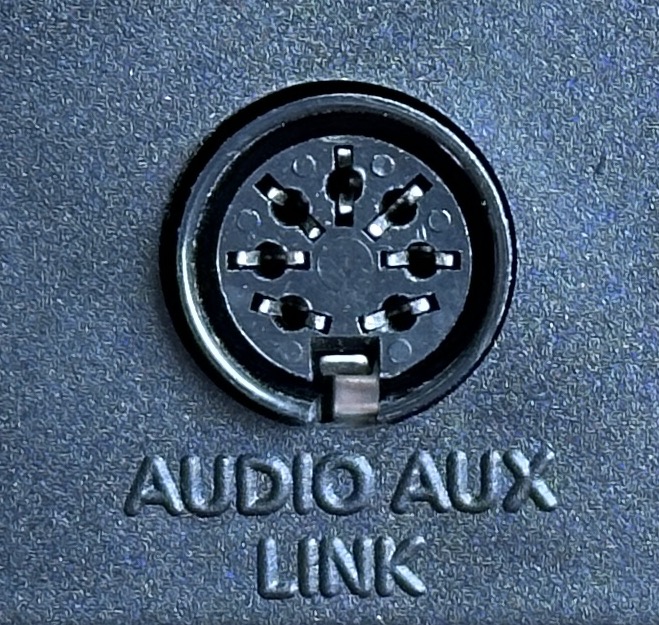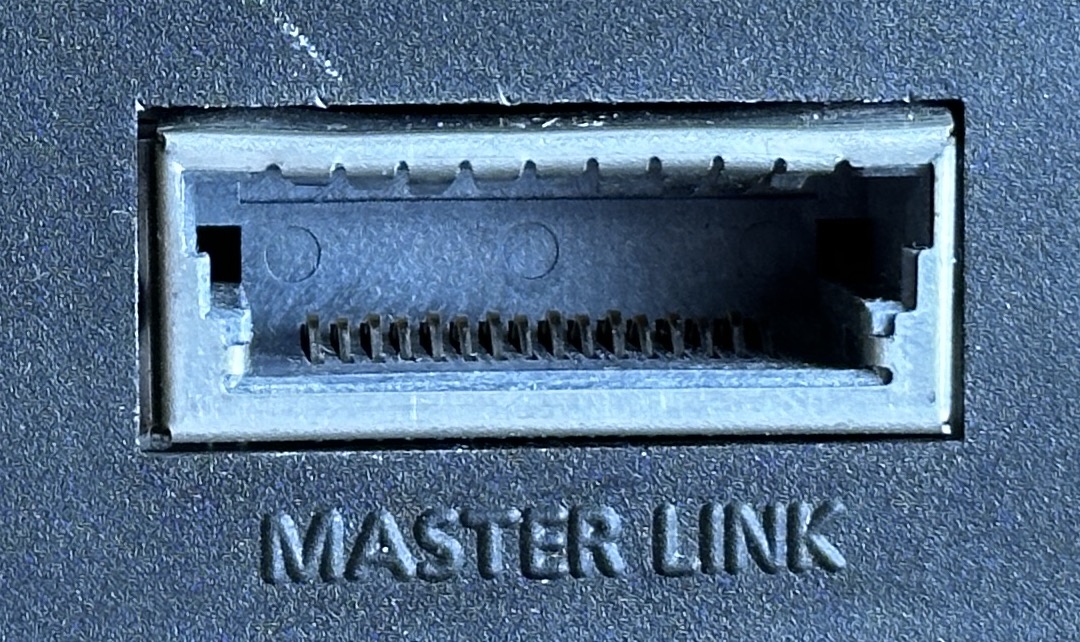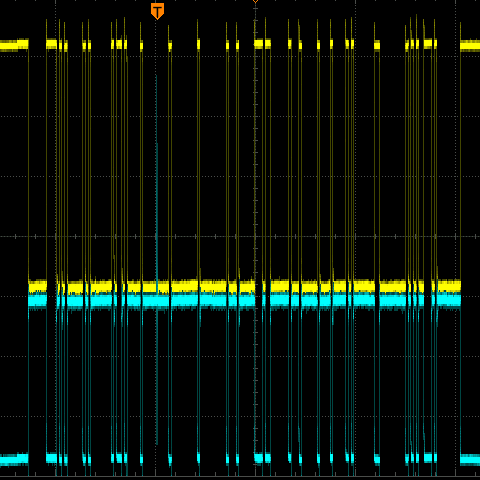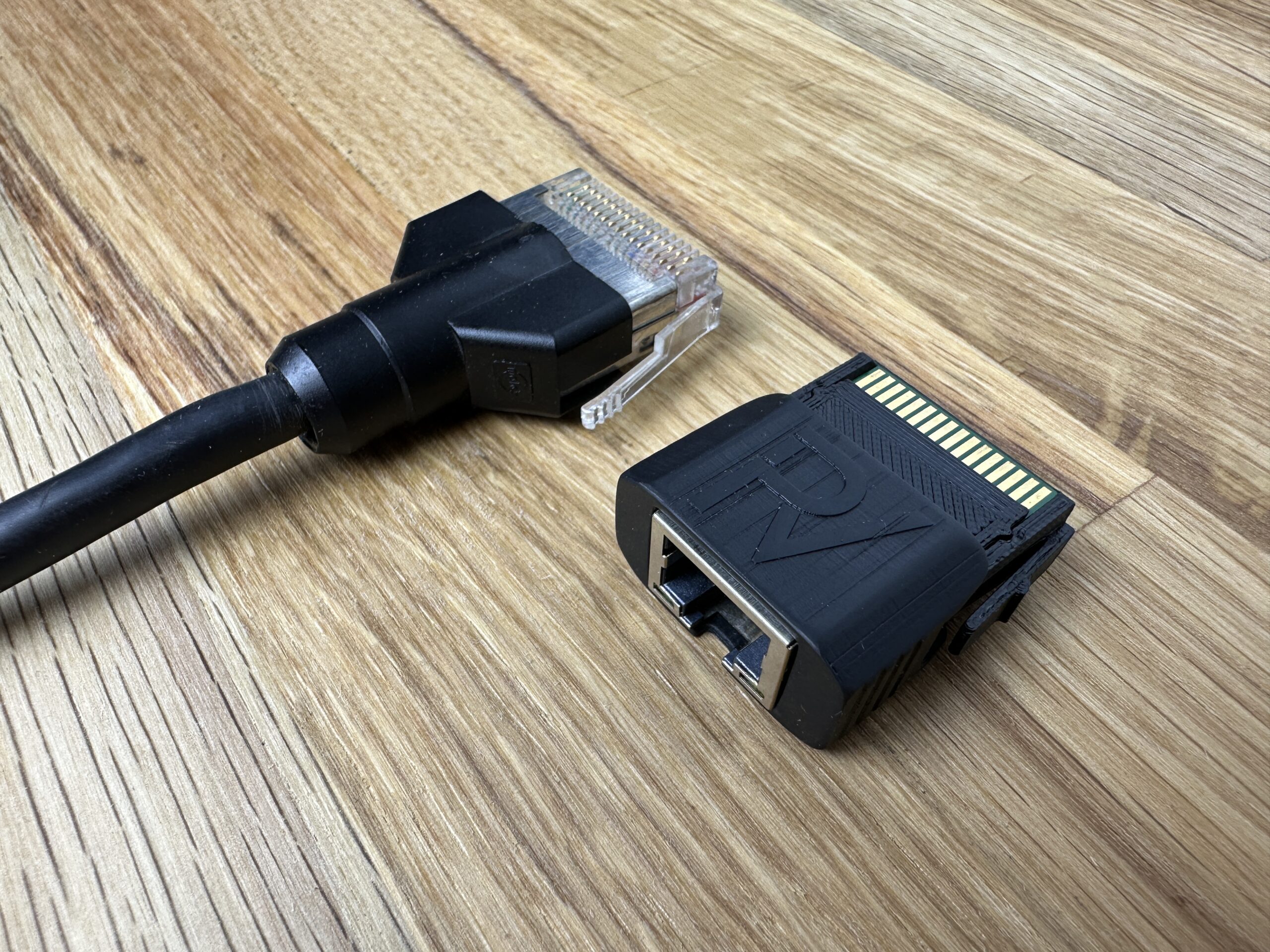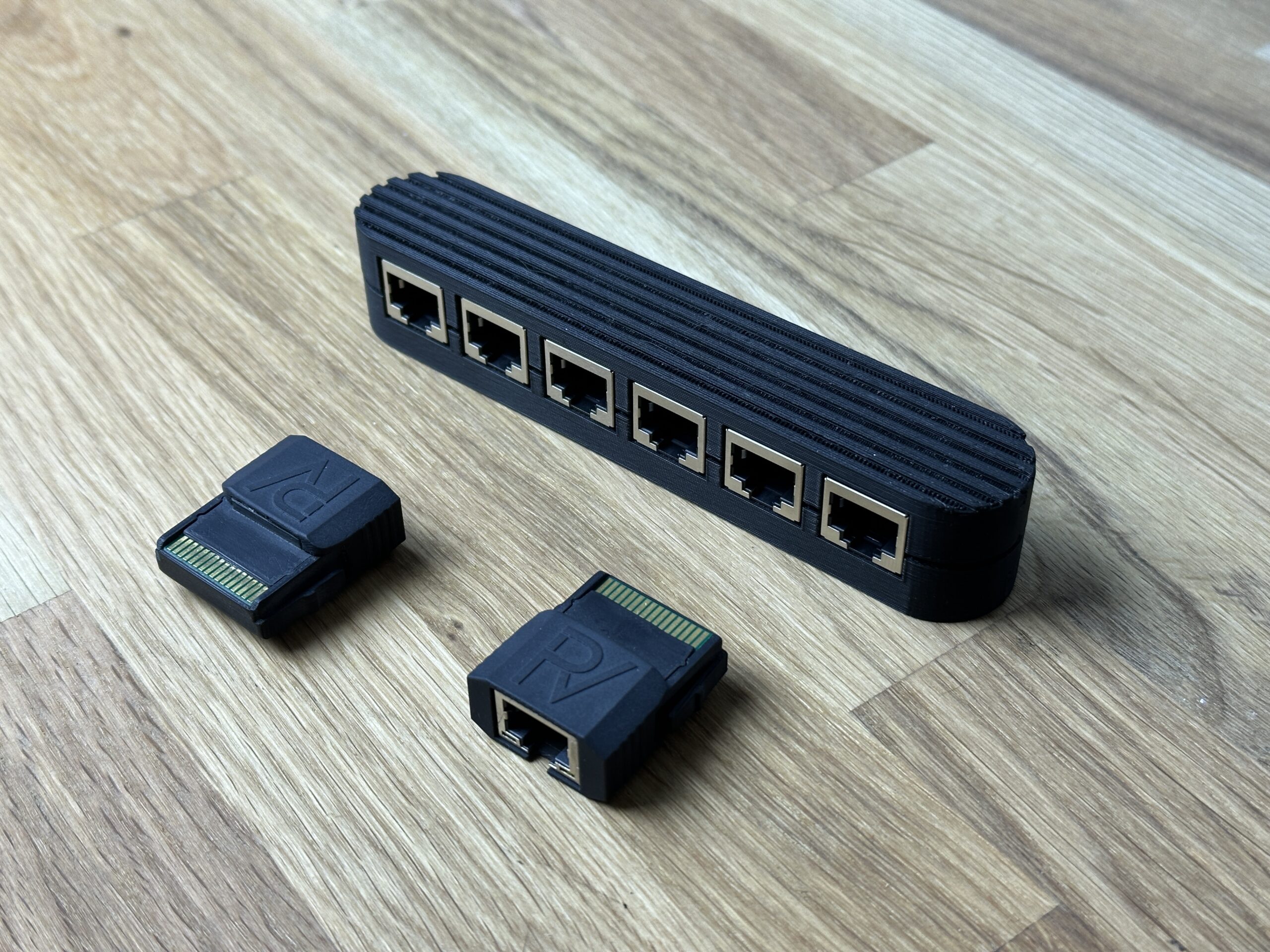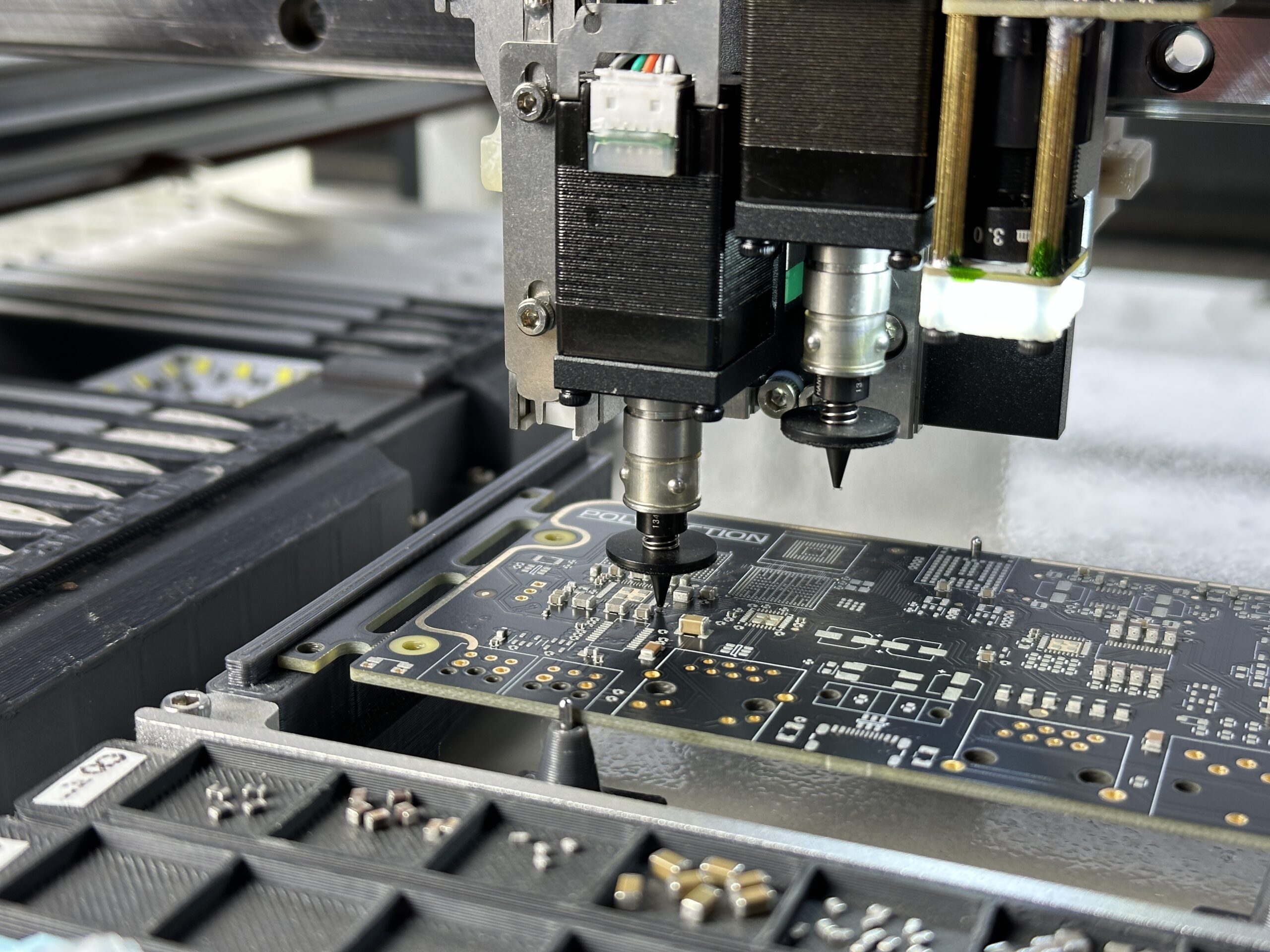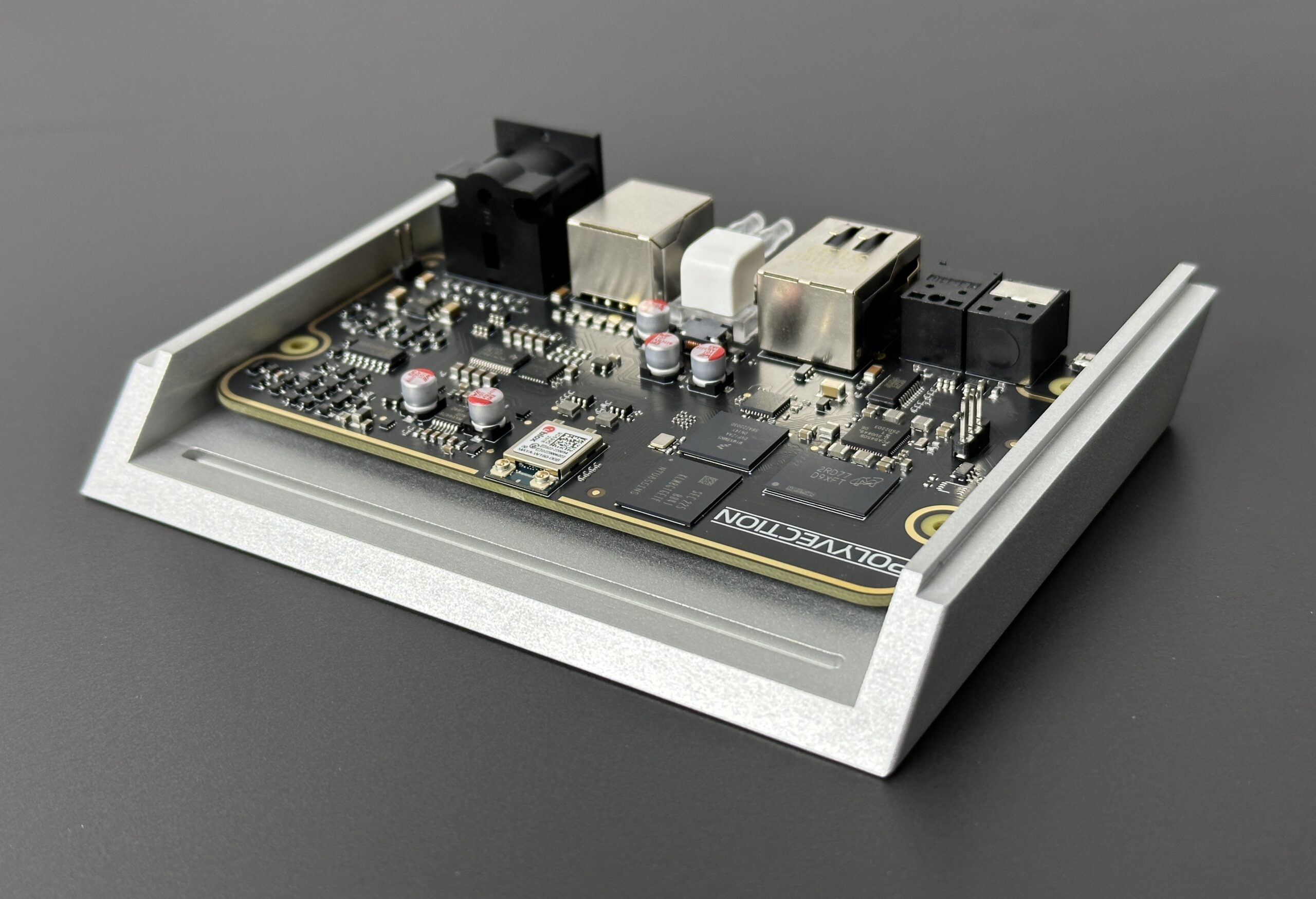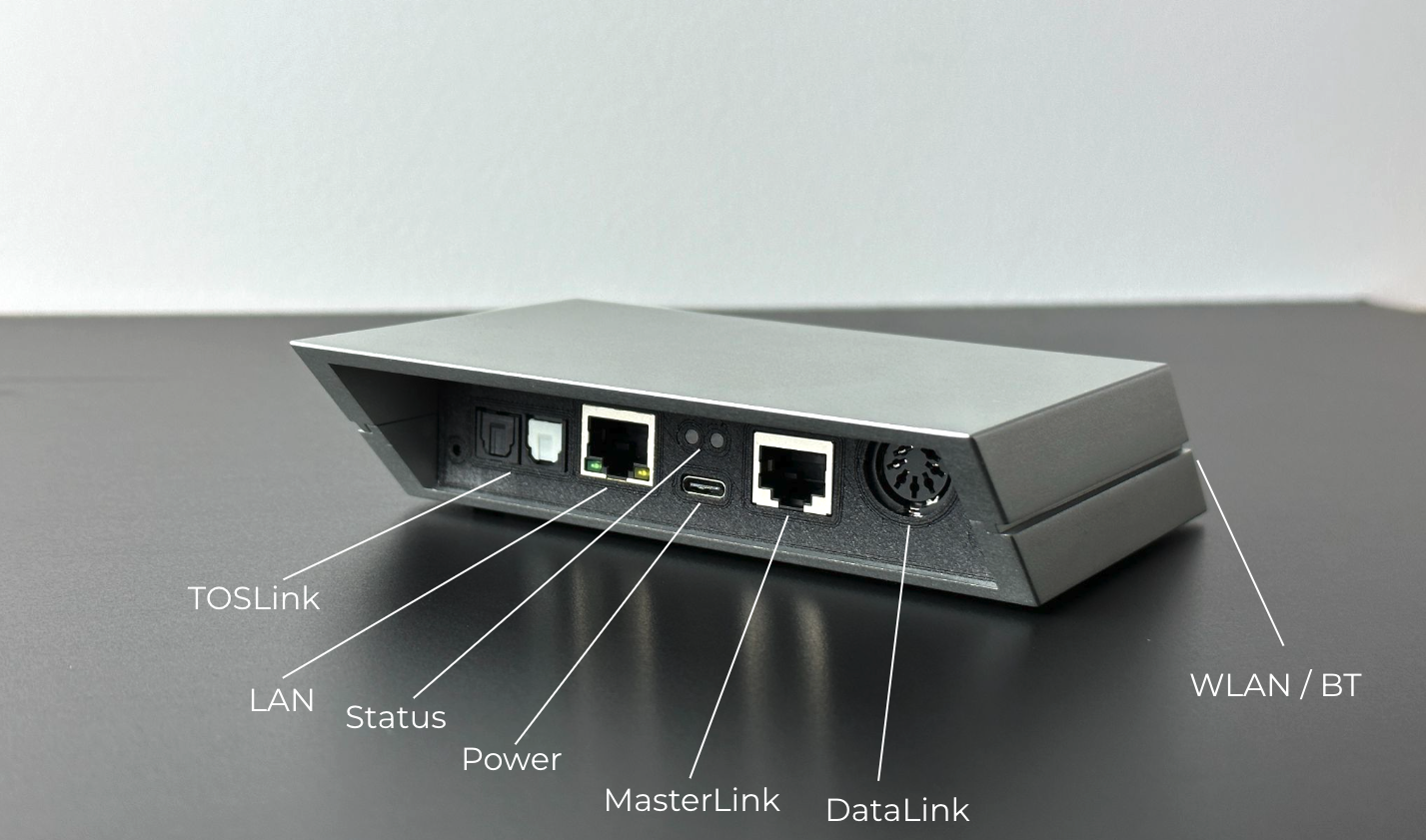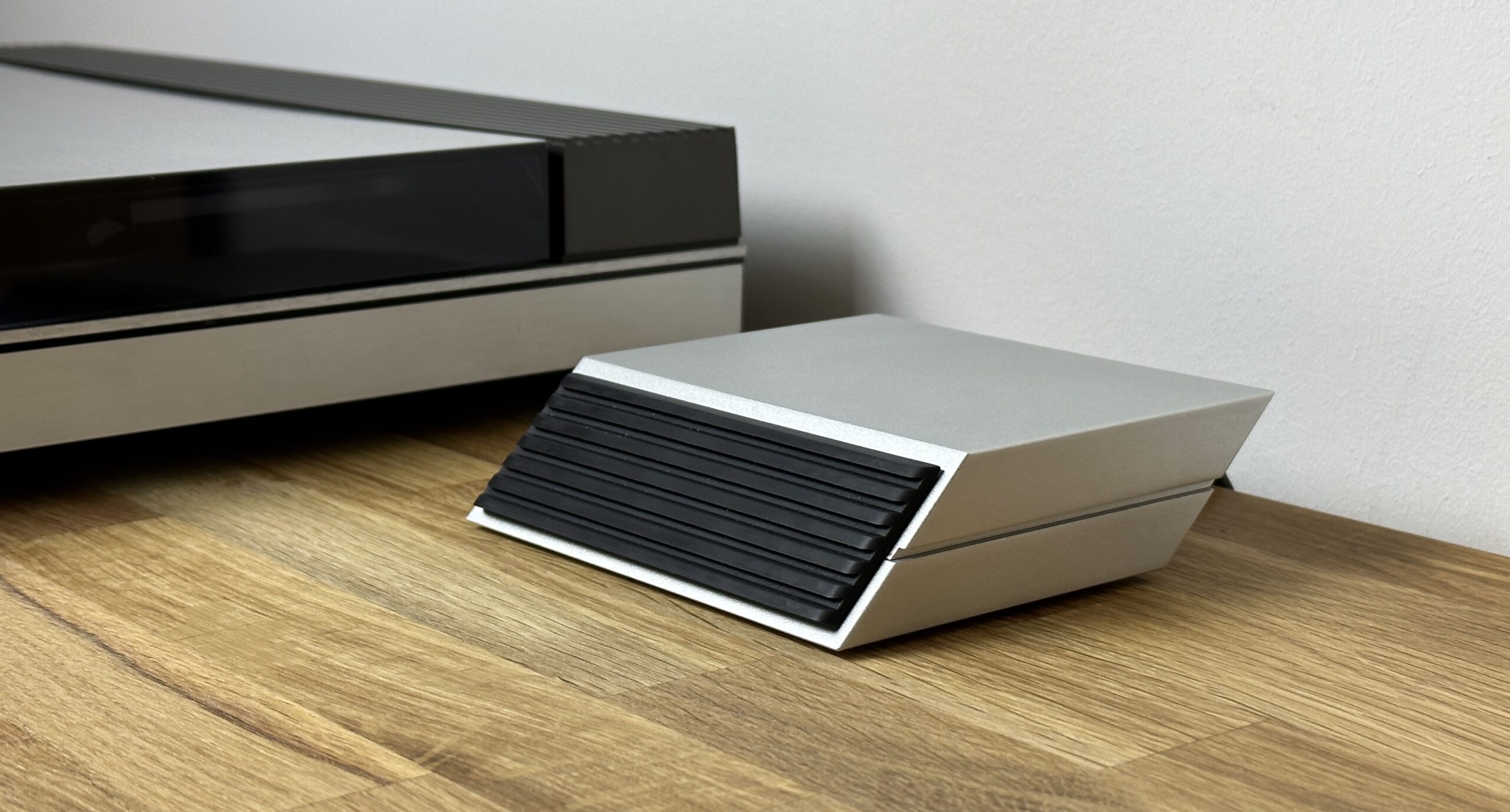Universal Link Adapter
Where Ingenuity Meets Connectivity: showcase project of developing a network adapter revolutionizing classic audio gear integration.
A problem to solve
Turntables and CD players have experienced a strong comeback lately. Unfortunately, they can’t directly be interfaced with modern network-based devices. They date back to a time when streaming was unheard of.
Envisioned solution
We developed a concept product that connects to some of the most iconic audio devices from around the 90’s. It uses the propritary communication interface of two generations for bridging them to the modern world.
Deep dive into the development
As you might think – it was not a trivial task. Serial communication protocols of the last century needed to be analyzed and understood. An obsolete connector needed to be recreated. Streaming electronics including matching software needed to be developed. Last but not least visually appealing housing was also a necessity to create from scratch.
Let’s go over it step by step.

Initial Situation
Okay, so for this project we sourced an old but functioning turntable as well as a CD player. Not just some random units but design classics. The visual appearance of those devices didn’t age thanks to a pretty timeless design and stunning mechanics but the technology did a lot. The curious will find out which danish devices we are talking about here.
There is something special about both units. The turntable is a tangential one that is fully remote-controlled. No fiddling with the pickup arm. The CD player magically opens up both of its aluminum wings to get access to the CD. If you are a fan of some nice mechanical solutions go and browse the web for some videos.
Luckily both devices were developed to be completely remote controlled but as their manufacturing date is roughly 10 years apart they are using different protocols. Browsing the web and their manuals you can see that the turntable uses something called Datalink (or sometimes referred to Audio Aux Link) while the CD player uses a more modern fieldbus called Masterlink.
What we are going to do here is develop a proof-of-concept device that can connect to any classic Datalink or Masterlink product. There are a lot of them! In the end, we will be able to control them and broadcast their analog audio output digitally to modern network speakers.
But first we have to understand how to interface those old products.
Understanding legacy data protocols
Audio Aux Link / Datalink (or DL) uses a well known 7 pin DIN connector that was very common back in the days. There is a single-ended analog audio input as well as output capability along with a bidirectional data signal. Looking around the web you can see that there are two different communication protocol versions. One is called Datalink ’80 while the other one is called Datalink ’86. The number is likely the year of introduction and both are electrically compatible. It looks like DL was only used as a peer-to-peer connection.
Masterlink (or ML) instead is completely different. The connector itself is likely something custom-made. On the housing, you can see a small Molex logo but no part numbers, and even further research does not reveal any kind of information that this was ever used outside the vendor environment. Furthermore, it seams the connector is obsolete and not being made anymore. In contrast to Datalink both audio and data is transmitted symmetrical and both are bidirectional. ML was used as a fieldbus for a multiroom system. Many nodes could be wired in parallel to a master unit.
An oscilloscope capture of the DL ’80 data bus during data transmission. While only one is shown in the picture above it looks like two identical 8-bit messages are sent when pressing a button. 5V logic level. Likely a pull-up resistor to 5V that gets pulled low during data transmission. Analog audio can either be a raw pickup needle signal or on a standard 1 Vrms level depending on the device.
This one is a capture of the symmetrical ML communication. Data is being transmitted on +/- 250 mV levels likely to mitigate any crosstalk to the nearby audio signals. It’s normal serial data at 19200 baud but with wired space and mark parity bits. It probably comes close to RS422. Audio is fully symmetrical and on 2 Vrms level. Depending on the device the same pins are either used for sending or receiving.
Our turntable example device uses DL ’80 so we have to find out a way to replicate signals for PLAY, STOP, NEXT, and PREVIOUS. A pragmatic approach was chosen here. As our Universal Link Adapter will be based on a Linux system and we just want to send four simple commands on that single pin the idea is to use LIRC. While this is the Linux IR tool of choice we are simply repurposing it a little. In raw mode, it can easily record such simple signals and also replay them accordingly.
For the ML interface our CD player is using things are a bit more complicated. It is a proprietary field bus that contains addressing, payloads, and checksums and needs some custom circuits. Luckily the protocol itself was already reverse-engineered by other people to a certain extent. So we just had to create the matching circuit for interfacing.
Obsolete connector recreated
While from the technical side, we are now almost there to at least create a block diagram of our envisioned Universal Link Adapter one thing is a little showstopper. We cannot integrate the legacy ML connector as it isn’t being made anymore. As only half of those 16 pins are used in that connector the idea is to put a simple RJ45 receptacle on the Universal Adapter side. Then a simple ML plug adapter was developed so that a standard ethernet cable could be plugged into any ML connector. It consists of three 3D-printed parts and a PCB with gold fingers to make contact with the spring-loaded pins in the receptacle. Also, a passive RJ45 distributor was designed. It allows multiple ML nodes to be connected to either the Universal adapter or any other ML master unit.
The Universal Adapter block diagram

As you can see above – the central part of the concept product is one of our drop-in processor design blocks. It is completely developed in-house and well-tested. It allows maximal design flexibility at a reduced NRE and final product cost. While for this application a quad-core NXP i.MX8MN processor is completely overpowered it was chosen because the currently sold smart speakers of that danish manufacturer rely on the same processor family.
During prototyping, it was found out that the i.MX8M processors (and probably i.MX6 family as well) cannot handle the ML needed space and mark parity bits by default. While they do support a special 9-bit mode where the 9th bit could be “hacked” into a parity bit an easier solution was found. The common FTDI USB serial converter bridges do support space/mark well so it was decided to just use that chip instead of the native UART peripheral within the iMX8MN SoC.
Mechanical design
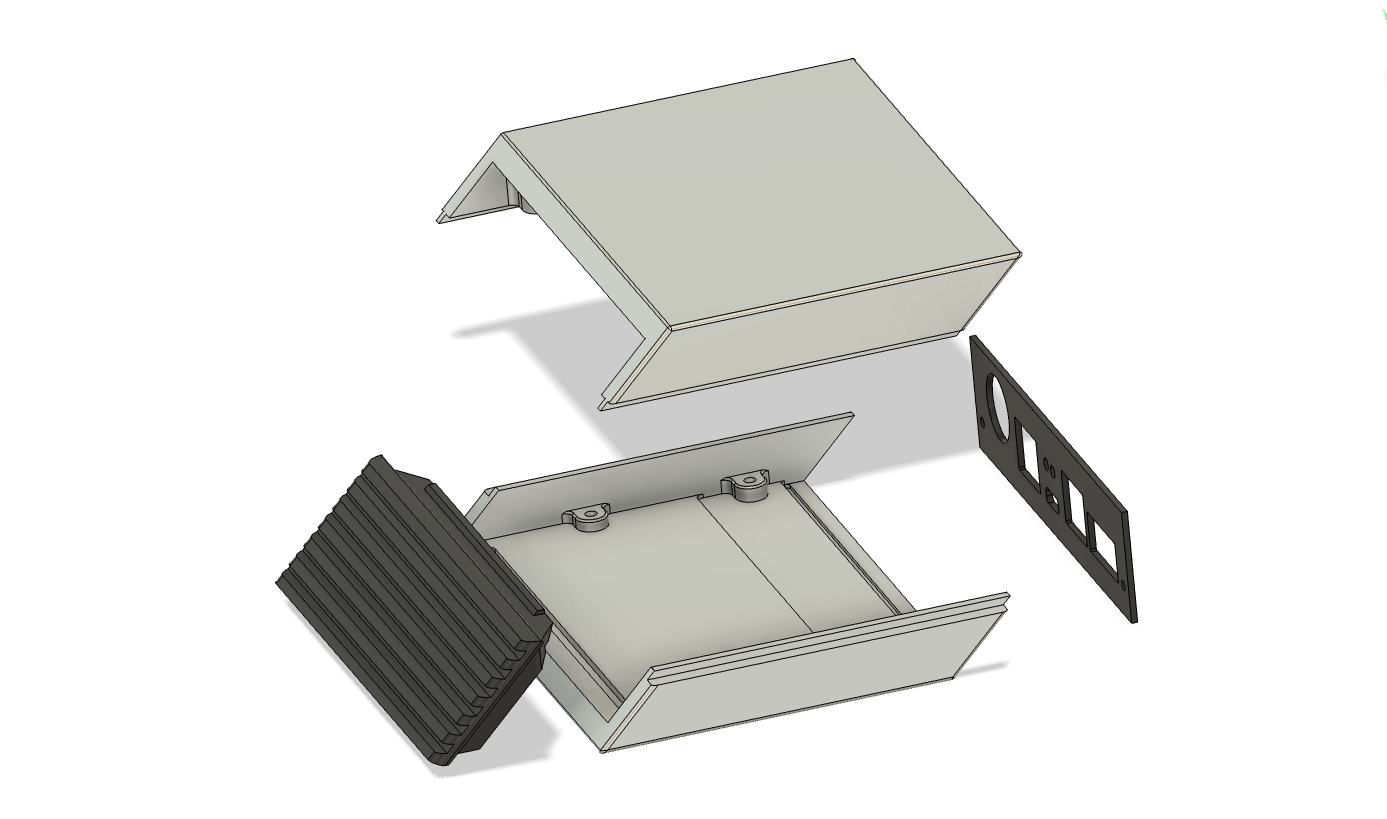
To give the future electronics of our Universal Link Adapter a nice home an anodized aluminium housing was developed. The rhombus shape gives it a stylish appearance while at the same time covering the bulky connector panel on the backside. The black insert on the front is a plastic part that brings in a design element of the classic devices while also being the “window” for the integrated WiFi and Bluetooth antenna.
A simple but effective construction allows to have only four screws in total which are holding the PCB as well as the different housing parts in place.
Electrical design

As already highlighted in the block diagram section for this project we were using our proven i.MX8MN processor design as the core. In fact, here we are actually using the i.MX8MN UltraLight version as we just need the bare minimum peripherals for this product. It allowed us the keep the board pretty compact and place all components where they make the most sense.
Technology wise this board uses a common 8 layer stack-up without HDI options like laser drilling or blind / burried vias. The physical dimensions are 11.6 x 6.6 cm. So still pretty compact for what it is.
Building the proof-of-concept unit
Thanks to our vast in-house equipment and machinery we could quickly build the first few units for testing purposes. They came out pretty nice and exactly as planned. As usual, manufacturing the electronics was a walk in the park although over 600 components needed to find their right spot.
The unit was also put into our in-house pre-compliance EMI tester for radiated emissions. Nothing conspicuous so it should be relatively safe to bring it through official compliance testing.
Software engineering



While not going too much into detail about the general underlying software architecture here comes a quick summary. The usual starting point for devices like this is our stripped-down yocto-based BSP which already contains all necessary bits for things like over-the-air updates, remote troubleshooting, and a simple websettings menu.
For this project, we extended it by the following things.
ML and DL data brokers that will handle the physical data connection to the classic devices. Forked-daap (now also called owntone) was chosen to distribute the incoming analog audio signal to any AirPlay-capable endpoint. For this, a simple HTML5 web app was added that basically feels like a native Android or iOS app. It allows you to control the classic device directly from your smartphone or tablet. There you can also choose the endpoint where the music should play. At the same time, the audio is also sent out as a Webradio stream so that you can even use any normal web browser for listening.
Closing Notes
Thanks to our proven drop-in processor blocks we could build a highly professional device that fills a certain market gap in almost no time. It roughly took six weeks from starting to investigate the legacy communication protocols to a pretty solid and fully functioning proof-of-concept product. That even was more like a gap filler project and was not run with a full work stream.
It allows a bunch of legacy CD players, turntables, cassette decks, TVs, and multiroom speakers to be controlled in modern network-connected environments. Not only one can now listen again to old vinyl and CDs. It is also pretty sustainable to re-using some of those design classics instead of buying new devices.
There is currently no intention from our side to sell this device as a product to individuals. It was done as a showcase project to shed some light into how we work. Usually, we are not allowed to publish any info about our normal clients or their projects. So we had to create something own. That is the entire purpose for this exercise you are reading about here.
We are completely unrelated to the manufacturer of those classic turntables and CD player. We were only using two of their classic products to show compatibility with our envisioned concept idea. All rights belong to their respective owners.
We would like to thank beolife-berlin for partly sponsoring that project and lending out several modern products of the same danish HiFi manufacturer that used to build the turntable as well as the CD player we crafted our envisioned product idea for.
Let’s get together!
It doesn’t matter if your are a startup with a life changing idea or an established company.
Everybody can profit from PolyVection’s decade long industry experience in bringing class leading products to market.
Use the blue floating button below to schedule a first video call. Philip will give you more insights on our offerings and how we can start a great collaboration.
Alternatively visit this link to book a meeting.
Introduction call with Philip.
At home in Germany.
Projects worldwide.
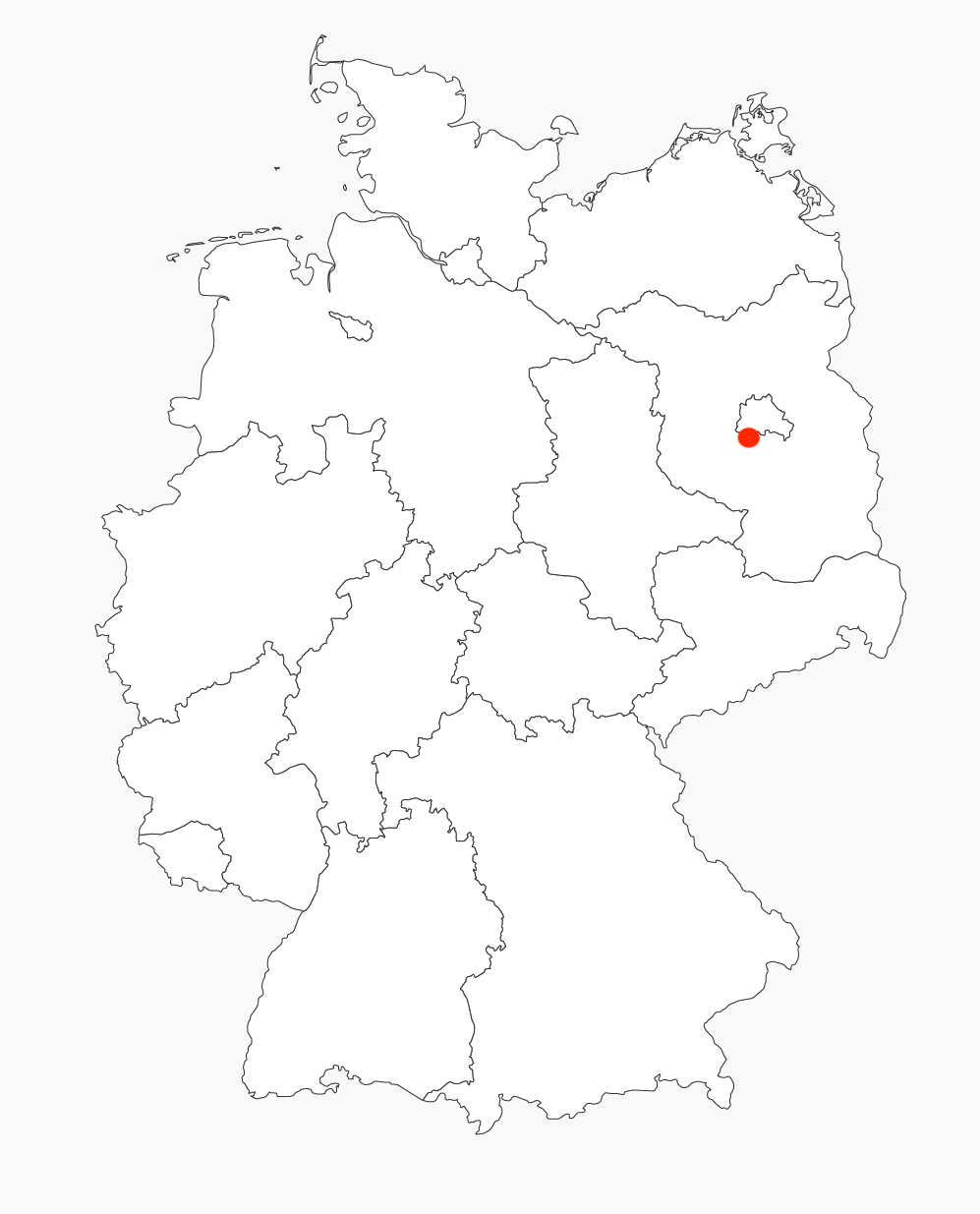
PolyVection UG, Haus 99
Ruhlsdorfer Str. 95
14532 Stahnsdorf, Germany
+49 3329 60 79 707
info@polyvection.com

